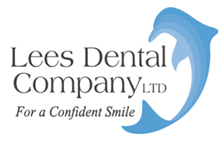Periodontal Treatment
Most gum disease in adults is a result of increased susceptibility of the individual to the bacteria that everybody has in their mouths. The weakness to gum disease is usually inherited, affecting some 8 – 10% of the population. Family members often have problems with gums as well and previous generations often suffered the loss of some or all of their adult teeth. There is a variety of severities of this weakness, with severe forms loosening teeth and causing increased bleeding on brushing, halitosis, gum recession, and early bone loss in people in their middle years.
Gum disease causes the sufferer few major problems until it is quite advanced. The progression of gum problems is slow and insidious. Inflammation of the gum tissue caused by plaque leads to a breakdown of the attachment between tooth and gum. This causes a deepening pocket which can be thought of as the elastic in a sock breaking down. Flossing and brushing cannot access these areas and a more damaging community of bacteria develops. Toxins produced by these bacteria lead to irreversible bone loss and eventually loosening of the teeth. These toxins have been shown by recent research to cause general health problems such as heart disease, immune system problems and problems in pregnancy.
Treatment
Treatment is in three parts. Firstly, it is vital to assess the extent of the existing gum disease and level of current cleaning. We will instruct you and show the hygiene measures that will be necessary to prevent the return of the disease once treated. It is vital to adhere to this home care or the benefits of treatment will be very short-lived. Only a high level of oral hygiene will prevent the return of the gum problems to the susceptible individual.
Secondly we will clean to the base of the pockets caused by the destruction of the attachment between the gum and the tooth. This is often carried out under local anaesthetic. This thorough cleaning removes the bacteria, hard deposits on the root surface and the toxins that prevent healing. If oral hygiene is maintained then re-attachment of the gum to the root surface can occur. Elimination of this stagnation area allows home care to remove all plaque and prevent disease re-occurrence.
Thirdly, we need to review and maintain you closely in the vital stages after treatment to ensure healing, correct oral hygiene and rapidly treat any areas of disease re-occurrence.
Treatment of gum disease cannot be seen as a cure because of the individual’s innate susceptibility will still be present. Much damage caused by the disease process is permanent. Severely affected teeth may still eventually need to be extracted. Poor home care or lack of follow up appointments with us can lead to disease re-occurrence.
However, gum treatment will extend the life of the treated teeth often allowing them to be kept for life. Gum problems are exacerbated by smoking, drugs that supress the immune system, poor diet, diabetes and high levels of stress.
Conditions and events associated with periodontal disease
- Low birth weight and premature birth
- Increased risk of cardiovascular disease
- Increased risk of pneumonia due to direct inhalation of bacteria
- Increased risk of type 2 diabetes, this is a two way process with bone loss more likely in periodontal disease in those with diabetes and also inflammation from periodontal disease increasing the chances of developing type 2 diabetes
- Overall increase in chance of developing cancer by 14%, especially:
- Lung, kidney, pancreatic and oesophageal cancers. The risk is particularly significant for pancreatic cancer with periodontal disease increasing the risk by 54%
- Increased risk of rheumatoid arthritis
- Increased chance of developing kidney disease
Oral hygiene instructions for people with gum diseases
Thorough cleaning is vital to prevent gum problems returning.
Spending time brushing all areas of the mouth is important. The edge of the gum where it attaches to the tooth is especially important to clean. A back and forwards motion with the bristles angled at 45 degrees is recognised as the best technique. Electric toothbrushes are more thorough and gentle than manual brushing. Brushing does not access between the teeth, this area is vital to clean. Floss once a day – last thing at night after brushing is advised. Sometimes gum problems result in larger gaps between the teeth that are best cleaned with interproximal brushes, we can advise which size would work for you. Regular mouthwashes can help reduce the number of bacteria in the mouth but are no substitute for good oral hygiene.
124 St Aubyn Street
New Plymouth
Phone. 06 759 1630

